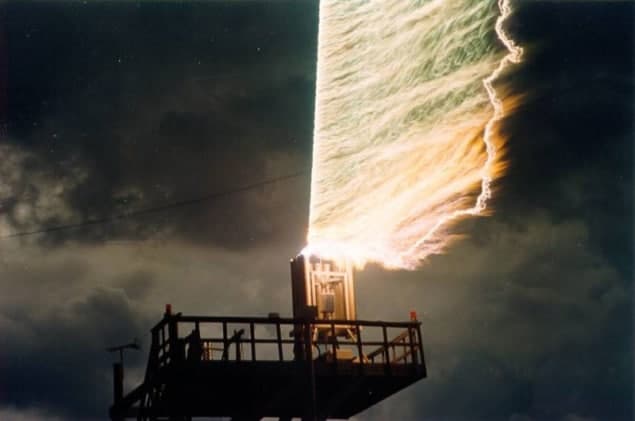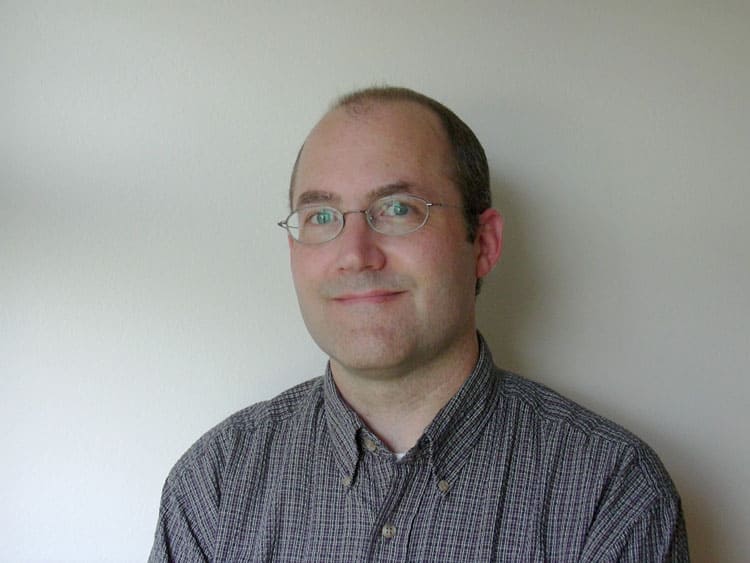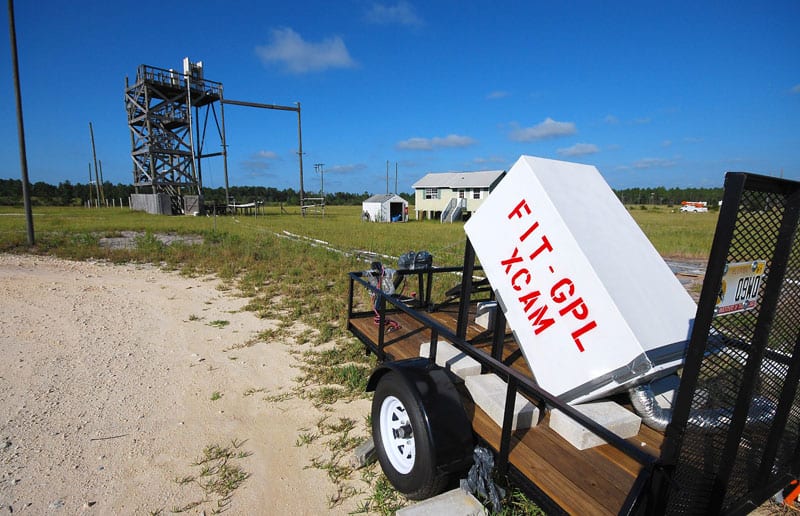In the same spirit as Benjamin Franklin and his famous kite experiments, Joseph Dwyer is a scientist willing to brave booming thunderstorms to understand more about lightning. In this exclusive interview with physicsworld.com, he explains that despite its familiarity we really don’t know much at all about these spectacular natural lightshows. But Dwyer and his intrepid colleagues at Florida’s International Center for Lightning Research and Testing are on a mission to change this by firing rockets into thunderclouds to trigger lightning, which they can study in semi-controlled conditions.

We learn about lightning in school, I thought it was a closed case?
Well, we know lightning initiates up inside a thunderstorm but we’re not sure how it initiates – how it gets started. In fact there are still three big questions. The first is the initiation. The second is how does it propagate, sometimes through miles of air? And the third is, when it reaches the ground – how does it choose to strike this object and not the other object?
But isn’t it just an electrical discharge between thunderclouds and the ground?
In a sense, but the big problem is that to get a spark, air needs to break down. It needs to stop being an insulator and start being a conductor. We commonly experience this if you touch a doorknob and you get a spark between your finger and the doorknob. What happens is the charges get concentrated into your fingertip and you get a big electric field. Then, as your finger approaches, the conventional breakdown field is reached, which is about 3 million volts per metre – and then air sparks.
The problem is if you look up inside thunderclouds, the breakdown field that you need to make a spark is never found. People have been launching balloons for decades, they’ve been flying airplanes, they’ve been launching rockets…but the fields they record are not even close to this strength.
So this is the sort of question you’re asking at the lightning research centre in Florida?
Well, there are two kinds of research going on there. Most of the research done now is basic science – we’re just trying to understand how lightning works, with a long-term hope of maybe protecting people if we can understand it better. Then there are other areas of research that the University of Florida historically has done. They’ll test things for the power companies: they’ll trigger the lightning and have it hit a power pole and see what it does, sort of engineering things.
How do you create your own lightning?
The lightning is going to strike anyway some place, so why don’t we make it strike here and now?
When a thunderstorm comes overhead – and that’s fairly common here in Florida since we’re the lightning capital of the US – we measure the electric fields and we can tell when conditions are good for lightning. The lightning is going to strike anyway some place, so why don’t we make it strike here and now?
So we launch a small rocket with wire behind it. The rocket is around a metre tall and has a spool of Kevlar-coated copper wire attached to its bottom, and one end of the wire stays attached to the ground. So as the rocket goes up the wire comes off the spool so you’re left very quickly with several hundred metres of wire hanging there in the air.
Does this trigger a spark in the same way as normal lightning?
Yes and no. The only thing we’re missing is the very initial process that starts naturally inside the thundercloud. All the subsequent strokes are exactly the same for natural and for triggered lightning, there’s really no difference that we can tell.
If you think of the doorknob example, the wire is like the finger pointing up and that will get a spark going between the rocket and the thunderstorm. And that spark usually starts at the end of the wire where it joins the rocket, and starts travelling upwards on its own, until it finds the thundercloud charge and then it will bring it down to us. And then the lightning follows the channel back down.
Why did you become interested in X-rays produced by lightning?
Well, it was first suggested that lightning produces X-rays way back in 1925 by CTR Wilson. He was the Scottish physicist who won the Nobel prize for inventing the cloud chamber [used in particle physics]. But if you look through the literature there have been some hints and some ideas but nothing very definitive. It was kind of like the Loch Ness monster – someone might go out and take a fuzzy picture or someone claims to have seen it from a submarine, and in the end you don’t believe any of it!
Have you built a special X-ray detector for lightning?
Yes, I was actually hired in 2000 by Florida Tech as a space physicist and I was studying things like coronal mass ejections and interplanetary disturbances. I was also looking for other things to do. When you do space physics you mainly measure things with space instrumentation, and if you’re not actually building something that goes into space, you’re looking for other things to build. And I was thinking: what else can I build around here that I could use? And I thought there’s all this lightning going on in the background and so maybe I could look for X-rays from lightning.
Was it easy enough to build?
The equipment was fairly straightforward to construct. I’d actually spent quite a few years making X-ray equipment, so that part wasn’t so hard. You basically just build a big, heavy aluminium box all welded together and you stick a detector inside with a battery – fibre optics are used to get the signal out. We had students build it and it took maybe three months to build, so compared with space instrumentation – which I was used to – it was a very simple thing to build. Within a month we had established that lightning emits X-rays.
Tell me about the X-ray images of lightning that you presented at the American Geophysical Union meeting back in December.
Oh yes, it’s a very exciting area to be in with a lot of so-called ‘low-hanging’ fruit.
For the first several years that we recorded X-rays from lightning, we measured important properties such as what energies the X-rays have and when they are produced. These measurements told us many things about how lightning emits X-rays, but we still were not clear about exactly what part of the lightning the X-rays were coming from as it propagated towards the ground. We eventually decided that we needed to make X-ray images of lightning, so that we could see where the X-ray emission was coming from. We were also curious what lightning looked like in X-rays. To do this we had to design and build a very specialized X-ray camera, a camera that is large, sensitive and very fast. Last year we built the first X-ray camera for measuring lightning – it is about the size of a refrigerator and weights 1500 lb.
So, it works well I presume?
This last summer we set it up next to our rocket launcher and were able to record several lightning flashes. The result was the first ever X-ray images of lightning, actually movies showing the lightning propagating towards the ground as seen in X-rays. Although the resolution of this first camera (30 pixels) was not great, it was good enough to clearly see the lightning racing towards the ground at 1/6 the speed of light. The camera recorded this at 10 million frames per second. We now have a brand new way of looking at lightning.
Do you think lightning research is a growing area?
Oh yes, it’s a very exciting area to be in with a lot of so-called “low-hanging” fruit. And just from going to conferences the last few years, there’s been a noticeable increase in activity. I came from a more mature field in space physics where this sort of exponential growth took place in the 1960s when it was first launching the satellites and discovering the Van Allen belt and stuff like that. So every field of science goes through this rapid growth. Then after you make the “easy” discoveries it levels off. That’s what’s completely different in lightning; we’re going through the exponential growth right now.





